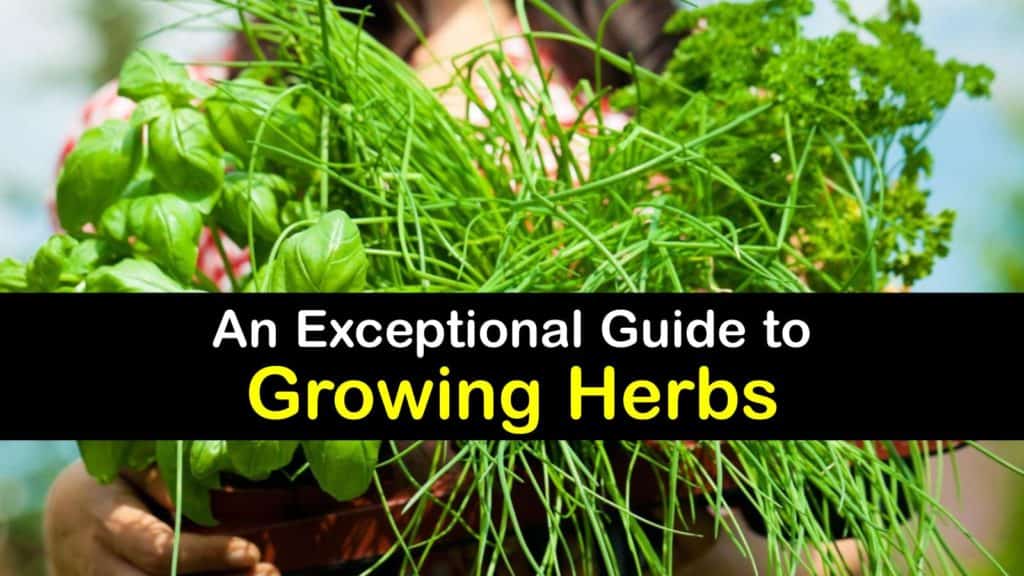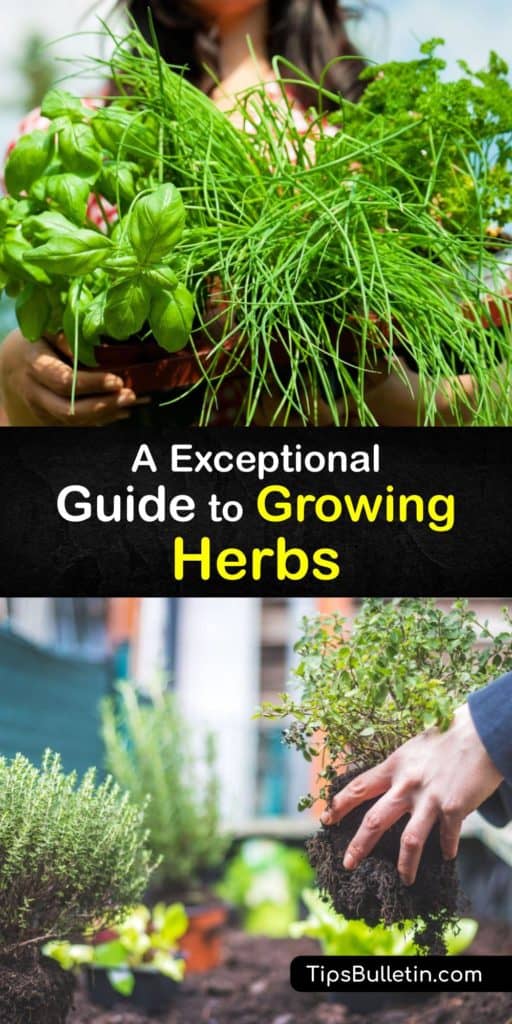There are countless reasons to plant an herb garden at home, from using fresh herbs in your favorite recipes to brewing a homegrown cup of tea. Read on to discover how to plant herbs in your garden or raised beds, patio pots or planter boxes, or even on your kitchen windowsill.
Planting herbs is remarkably straightforward, making them a perfect choice for beginner gardeners and experienced growers alike. Most herbs grow well in a variety of conditions.
As long as you plant them in rich soil and provide enough light and water, the options are endless. Although most herbs require full sun, there are still a few options for places with partial shade, too.

Terrific Tips and Tricks for Planting Herbs
Choose which herbs to plant based on the conditions in your garden space and your intended use in the kitchen. From basil and cilantro to thyme and tarragon, growing your own herbs is well worth the effort.
Herbs are a tasty addition to almost any meal, and knowing the difference between fresh and dried herbs is important.
When it comes to growing herbs, the key to success lies in your garden soil. Whether growing herbs in the ground or containers, ensure that your soil has good drainage and is rich in organic matter.
The seed packet or plant label has information about your herb plants’ light and water preferences and when to plant herbs of different types. Some herbs like rosemary and lavender prefer dry soil and full sun.
Others like spearmint, parsley, and coriander want consistently moist soil and thrive with just three or four hours of sunlight per day.
Plan your herb garden layout based on each plant’s growing requirements. There are numerous options for designing your garden space.

If you’re growing herbs in your veggie garden, consider strategically placing them to make use of their pest control potential. When growing herbs in pots, pair herbs to plant together for maximum benefit.
Select Your Herb Garden Site
The best way to plant herbs depends on your available space. If you have a sunny location and rich soil with good drainage, growing herbs outdoors works beautifully and enriches your garden environment.
If you don’t have outdoor garden space accessible, it’s okay. Many herbs make excellent houseplants. If a sunny windowsill with at least six hours of bright light is not available, consider using grow lights to keep your plants healthy.
Some growers put their potted herbs on the patio or deck for the summer growing season, then bring them indoors when the weather gets too cold. Others prefer growing herbs indoors year-round.
It’s helpful to keep culinary herbs close to the kitchen if possible so they’re readily accessible for things like making fresh pesto or bruschetta.
Choose Which Herbs to Plant
Deciding which herbs to grow is sometimes challenging. Make your selection based on your intended uses and what herbs are easy to grow in your area. For example, try the classic Herbes de Provence blend of marjoram, oregano, rosemary, savory, and thyme if you enjoy Mediterranean cuisine.
If you love Asian cooking styles, plant herbs like cilantro, Chinese chives, lemongrass, and Thai basil. Chamomile, lavender, lemon balm, and peppermint are excellent for making DIY herbal tea blends.
It’s helpful to distinguish between annual and perennial herbs when planning your garden. Annuals aren’t usually frost-hardy and only live for one growing season.
Perennials go dormant while they overwinter, then come back each spring. In mild climates, certain herbs like lavender, rosemary, sage, and thyme are evergreen.
It’s often easy to propagate and regrow basil, as well as a few other herbs, whether you have them in containers or the ground outside.
Here are a few types of warm-season annual herbs to try.
Many gardeners plant a mix of annual and perennial herbs.
What herbs repel mosquitoes? Lemongrass is beneficial for this purpose. Add a container or two to your deck or patio to help deter these pesky insects.
How to Plant Herbs in Containers
Container gardening is an excellent option for growing herbs. Whether you keep your pots indoors or outdoors or move them seasonally, here are a few critical factors to consider.
Always use pots that have drainage holes at the bottom. If water pools in the bottom of the container, the risk of root rot and fungal disease increases significantly.
While most herbs require regular watering, be careful not to overwater. The soil consistency should be similar to a wrung-out sponge, and the top inch or two completely dry before rewatering.
Use a well-draining potting mix rich in organic nutrients. It’s helpful if your potting soil has added perlite for drainage and peat moss or coconut coir for moisture retention.
When growing herbs from seed, it’s usually best to start them in seedling trays, then transplant the seedlings into pots once they grow a bit larger. Germination rates improve considerably when the soil stays consistently warm, which is sometimes difficult in a large pot.
If your soil is lacking in nutrients, the best way to fertilize herbs is at planting time and after your plants are several inches tall. A soil test is always a good idea prior to planting anything.
When using containers indoors, herbs to grow in fall or other seasons is not as important.
How Far Apart to Plant Herbs
Another significant factor is how far apart to plant herbs in your garden. For the best results, give each plant enough space to mature fully. Overcrowding leads to stunted growth and poor plant health.
How far apart to plant herbs depends on the specific plant species and what else is growing nearby. Check the seed packet or plant label about the spacing recommendations for each of your chosen herb varieties.
Companion Planting with Herbs
The advantages of planting herbs aren’t limited to the kitchen. There are numerous best fresh herbs to grow that provide a wide range of benefits for their neighbors in the garden.
Plants in the Umbellifer family include chervil, cilantro, dill, fennel, and parsley. Planting cilantro seeds and other Umbellifer family members attract beneficial predatory insects like hoverflies, lacewings, ladybugs, and parasitic wasps (which don’t sting humans).
However, fennel secretes a substance from its roots that stunts the growth of most other plants. Therefore, it’s best grown in a container.
Chives and mint effectively repel deer and rodents from the garden. However, mint tends to spread vigorously. Give it plenty of room or grow it in a pot.
Flowering herbs attract pollinators to the garden, which is essential for fruiting crops like cucumbers and squash. Even self-pollinating plants like peppers, tomatoes, and strawberries benefit from the bees’ and butterflies’ help.
Plant citrus-scented herbs like lemon balm, lemongrass, lemon thyme, and lemon verbena to keep mosquitoes away. These herbs also make delicious and refreshing teas.
Grow culinary herbs indoors or outdoors, in pots or in the ground, and choose whichever ones you like using in your favorite recipes.
Ensure the growing herb plants have good drainage, rich soil, and appropriate light and water. Planting herbs around the garden is often beneficial for your other crops, too.

If you found these herb gardening tips useful, please feel free to share this article about how to plant herbs with your green thumb friends and family on Facebook and Pinterest.